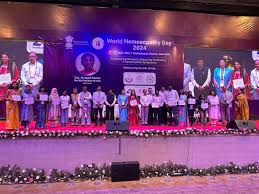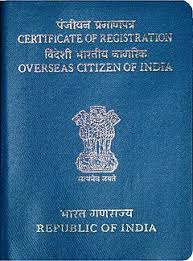Today’s Current Affairs: 13th April 2024 for UPSC IAS exams, State PSC exams, SSC CGL, State SSC, RRB, Railways, Banking Exam & IBPS, etc
Table of Contents
New Features For The Unified Payments Interface:

The Reserve Bank of India (RBI) has recently introduced two new features for the Unified Payments Interface (UPI).
- These new features are poised to make UPI even more versatile and user-friendly, benefiting both consumers and financial institutions.
- New Features:
- UPI Access for Prepaid Payment Instruments (PPIs) through Third Party Apps: Previously, UPI payments from Prepaid Payment Instruments (PPIs) could only be made using the web or mobile app provided by the PPI issuer. Now, RBI proposes to permit the use of third-party UPI apps for making UPI payments from PPI wallets.
- Enabling UPI for Cash Deposit Facility: Traditionally, depositing cash at Cash Deposit Machines (CDMs) primarily required the use of debit cards.
- Building on the success of card-less cash withdrawal using UPI at ATMs, RBI now proposes to facilitate cash deposits in CDMs using UPI.
- This measure aims to enhance customer convenience and streamline the currency handling process at banks.
- Soon, customers will be able to deposit cash at CDMs in banks and ATMs through the UPI app.
Unified Payments Interface (UPI):
- The Unified Payments Interface (UPI) is a real-time payment system that allows instant transfer of funds between two bank accounts through a mobile platform.
- It was developed by the National Payments Corporation of India (NPCI) and is regulated by the Reserve Bank of India (RBI).
Credit-Deposit Ratio : Reached Its Highest Level

Data from the Reserve Bank of India (RBI) reveals that the credit-deposit ratio has reached its highest level in at least 20 years.
- This surge in the credit-deposit ratio indicates that more of the banks’ deposit base is being utilized for loans, including home loans and other consumption-related loans.
- The credit-deposit ratio is a financial metric that measures the proportion of a bank’s deposit base that is used for lending.
- It is calculated by dividing the total loans extended by the bank by its total deposits.
- A higher ratio indicates that a larger portion of the bank’s deposits is being lent out as credit, while a lower ratio suggests more deposits are being held in reserve or invested in other assets.
- If a bank has a credit-deposit ratio of 80%, it means that 80% of its deposits are being used to provide loans.
- This ratio is crucial for assessing a bank’s liquidity and lending capacity.
Homoeopathy Symposium:

The President of India inaugurated a two-day Homoeopathy Symposium, organised by the Central Council for Research in Homoeopathy on the occasion of the World Homoeopathy Day.
- Homeopathy is a system of medicine which is based on the concept that the body has an inherent ability to heal itself, and the role of the homoeopathic remedy is to stimulate this self-healing process.
- Practitioners of homoeopathy believe that diluting the substance to extremely small amounts enhances its healing properties while reducing any potential side effects.
- The World Homoeopathy Day is observed every year on 10th April to commemorate the Birth Anniversary of Dr. Hahnemann, the Founder of Homoeopathy.
- Theme 2024: Homeoparivar: One Health, One Family.
Overseas Citizenship Of India : Expansion

India has been contemplating extending the Overseas Citizenship of India (OCI) Card privileges to overseas Indians in Fiji and other nations after relaxing the rules for Suriname.
- In 2023, India announced an extension of the eligibility criteria for OCI card of the original Indian immigrants in Suriname, from the fourth generation to the sixth generation.
- Overseas Citizenship of India (OCI) Card : The concept of OCI was introduced in response to demands for dual citizenship by the Indian diaspora, particularly in developed countries.
- The Ministry of Home Affairs defines an OCI as a person who:
- Was a citizen of India on or after 26th January 1950; or
- Was eligible to become a citizen of India on 26th January 1950; or
- Is a child or grandchild of such a person, among other eligibility criteria.
- According to Section 7A of the OCI card rules, an applicant is not eligible for the OCI card if he, his parents, or grandparents have ever been a citizen of Pakistan or Bangladesh.
- The category was introduced by the government in 2005.
- The Government of India via the Citizenship (Amendment) Act, 2015 merged the Person of Indian Origin (PIO) category with the OCI category in 2015.
Dark Energy Spectroscopic Instrument (DESI):

DESI’s groundbreaking project harnesses 5,000 robots to peer 11 billion years into the past, revealing unprecedented insights into our expanding universe.
- It found the most precise measurement of the universe expansion rate at a rate of 68.5 (±0.6) kilometres per second per megaparsec (a million parsec; 1 parsec equals 3.2616 light years).
- DESI made a huge 3D map to study dark energy’s impact over 11 billion years.
- In the Lambda CDM model, matter and dark energy affect the universe’s expansion differently: matter slows it, while dark energy speeds it up.
- Both dark energy and dark matter dominate the universe, comprising about 95% of it.
DESI:
- DESI is a project aimed at mapping the universe to study dark energy’s effects over billions of years.
- It is the product of an international collaboration that brings together researchers from more than 70 institutions (including from India).
- It is a ground-based dark energy experiment, located on the Mayall 4-meter telescope at Kitt Peak National Observatory (USA)
Wigner Crystal:

Scientists have for the first time successfully visualized the elusive Wigner crystal, a strange kind of matter that is made entirely of electrons.
- Wigner Crystal is the solid phase of electrons, first predicted by Eugene Wigner in 1934.
- It is one of the first proposed many-body phases stabilized by the electron-electron interaction.
- Interaction among electrons could lead to their spontaneous arrangement into a crystal-like configuration, or lattice, of closely packed electrons.
- This could only occur because of their mutual repulsion and under low densities and extremely cold temperatures.
- This is because the potential energy dominates the kinetic energy at low densities, so the detailed spatial arrangement of the electrons becomes important.
- To minimize the potential energy, electrons form a crystal-like configuration.
- A true Wigner crystal, instead of following the familiar laws of physics in the everyday world, would follow the laws of quantum physics, in which the electrons would act not like individual particles but more like a single wave.
- Wigner crystal is stable at extremely low densities.
- If the density increases, the kinetic energy becomes important, and eventually, the crystal melts.
- Wigner crystal is very difficult to observe experimentally. The reason is that it is very fragile with respect to the environment.
QS World University Rankings 2024:

Sixty-nine Indian universities made it to the rankings with 424 entries in the 2024 QS World University Rankings by Subject.
Highlights of the 2024 Rankings:
- Massachusetts Institute of Technology (MIT) has been ranked as the 1 university in the world by QS World University Rankings for 12 straight years.
- Indian Institute of Technology Bombay (IITB) is the top ranked Indian institution, being ranked at 149.
- A total of 69 Indian universities with 424 entries have made it to the QS World University Rankings by subject, marking a 19.4% rise from the previous year’s 355 entries achieved by 66 universities.
- India is the second most represented country in Asia for the number of ranked universities (69), after mainland China with 101.
- India holds the fourth position in the total number of ranked entries (454), after China (1,041), Japan (510) and South Korea (499).
- Jawaharlal Nehru University (JNU) leads among Indian institutions, securing the 20th position globally for development studies.
- In total, 12 Indian Higher Education Institutes(HEIs) feature in the top 100, and 69 HEIs from India are ranked in 44 out of 55 subjects.
- India has shown significant progress, with a 20 percent improvement in the Citations per Paper indicator, reflecting a strong research capability.
- In terms of volume, India is now the world’s fourth-largest producer of research, generating 1.3 million academic papers in this period, trailing only behind China, the United States and the United Kingdom.
- However, the country faces challenges in securing citations in premier global journals, with only 15% of its research cited in these publications between 2017 and 2021.
QS World University Rankings:
- Published annually by global higher education consultancy Quacquarelli Symonds, the QS list ranks the world’s top 1,000 universities.
- For 2024, universities were evaluated in 55 specific subjects and five broader subject areas.




